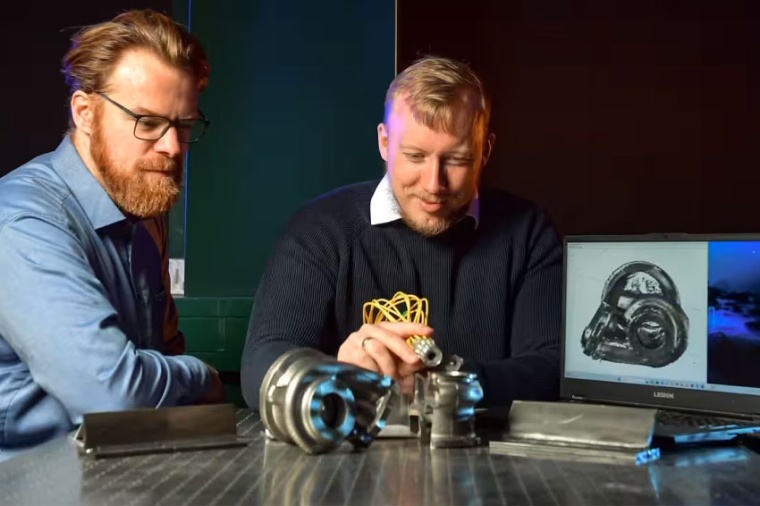Measuring head without electronic components
Research team develops explosion-protected 3D endoscope for industrial applications in collaboration with business partners.
In a new joint project, a team from Jena University’s Institute of Applied Optics and Biophysics led by Franke and project manager Dr Andreas Stark has set itself the task of making the measurement technology required for the examination and maintenance of hydrogen tanks and pipes so safe that no sparks can occur. The project “3D measurement using explosion-protected endoscopy with structured lighting” (3D-Vens) will be funded by the Federal Ministry of Education and Research with a total of around three million euros over the next three years. In addition to the team from the University of Jena, researchers from the Fraunhofer Institute of Applied Optics and Precision Engineering and the three companies IT Concepts, Ingeneric, and Grintech are part of the consortium, which began work at the beginning of July.

The aim of the project is to build an endoscope demonstrator over the next three years that combines other aspects in addition to explosion protection, such as the use of miniature optics and multicore fibers as well as a new type of 3D measurement method. The special feature of this integrated approach is that the measuring head itself – which could come into contact with hydrogen – does not contain any electronic components that could form sparks, thus minimizing the risk of explosion, as Andreas Stark, the scientific coordinator of the network, emphasizes.
In order to obtain a three-dimensional image of the objects being examined, patterns are generated in the endoscope using structured illumination and, after interacting with the object, these are guided out of the system via a separate fiber bundle. “This is where the electronic processing into an image takes place,” says Christian Franke. Multicore fibers are used – these are bundles of up to twelve individual fibers, each with a diameter of 150 µm. “We can control each fiber separately and thus achieve a high spatial resolution and depth of field.” Details as small as 100 µm can be imaged in real time with such an endoscope and without any risk of explosion.











